On our tenth day in Japan, we left Kyoto for a day-trip to Nara, the first permanent capital of Japan famous for its temples, shrines and deers.
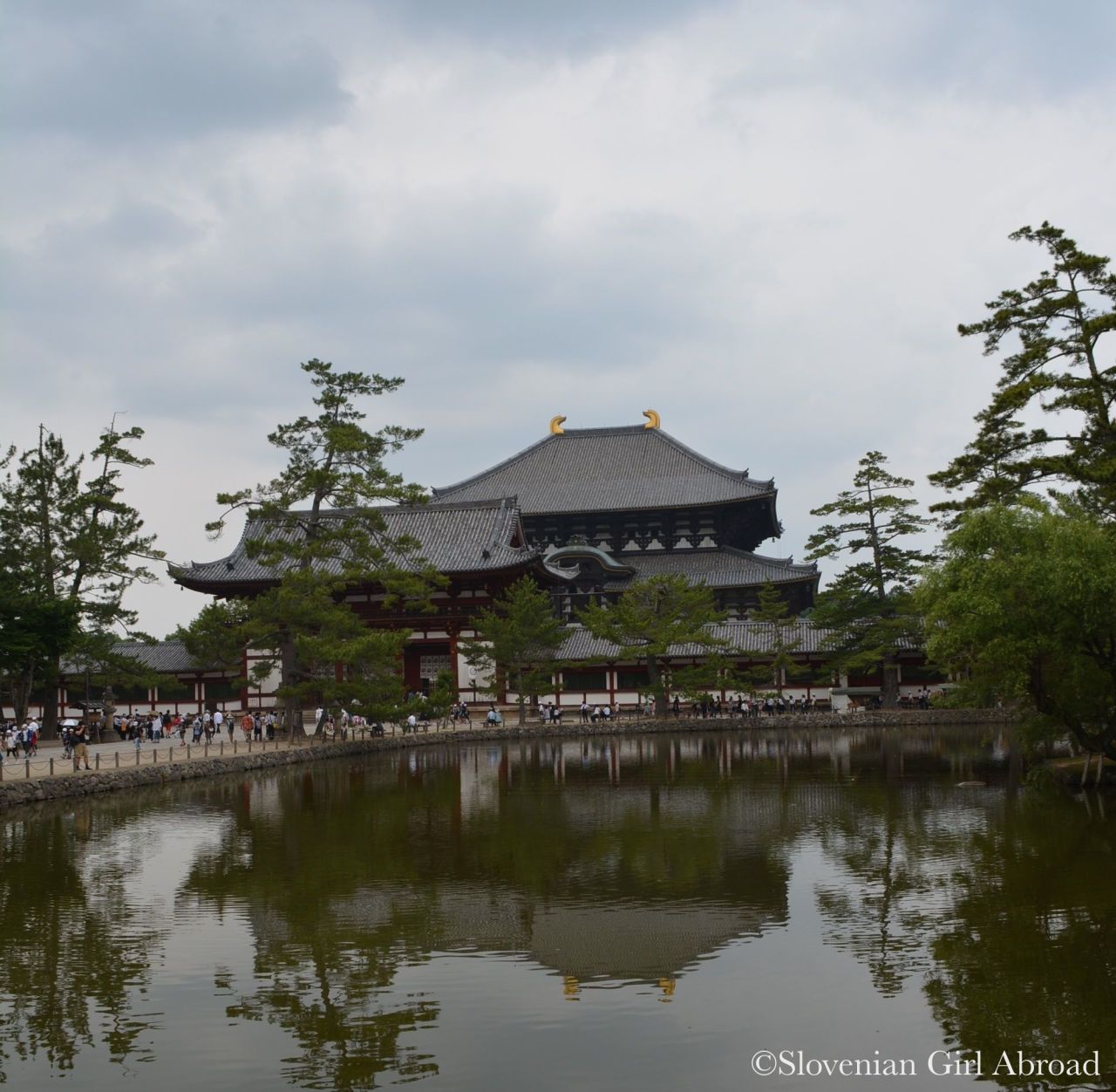
Todai-ji – one of the Nara’s temples inscribed to the UNESCO’s World Heritage List
Our journey began at the Kyoto Station where we’ve boarded the direct train to Nara. After app. 40 minutes of ride, we arrived to Nara JR station. There we took the bus to Nara Kōen, a large park in central Nara where a hundreds of freely roaming sika deers live. It’s hard to missed them as they are everywhere.
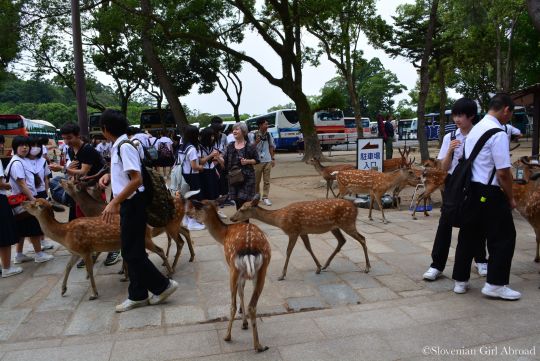
Sika deers are a symbol of Nara
In Shinto religion deers are considered to be messengers of the gods. Nara’s app. 1200 deers become a symbol of the city and were even designated as a national treasure. We’ve bought a package of deer crackers for 150 JPY by the first stand and feed some of the deers. With their doe eyes and wet noses were definitely the cutest creatures. Asking for food, some of the deers rubbed against us, nudged us with their foreheads and some even bowed their heads. As the bowing is an important feature of Japanese etiquette, we joked, even Japanese deers are polite.
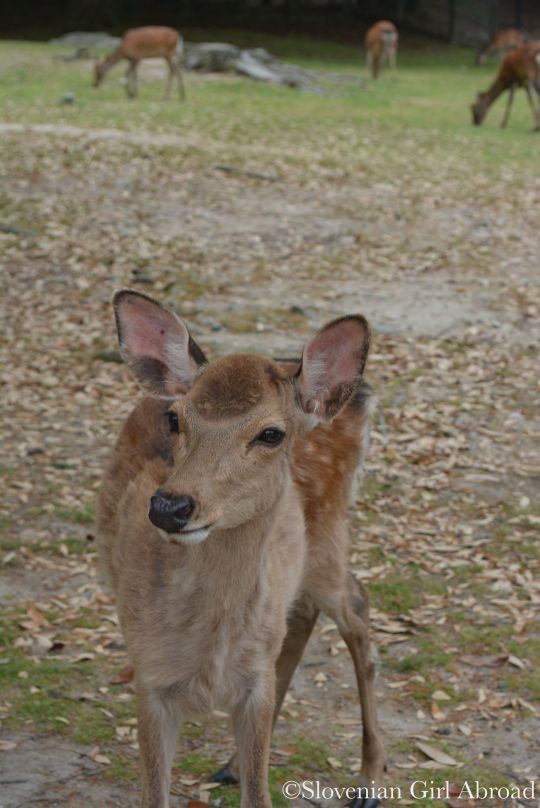
Cute sika deer
Prior to our visit, I’ve read warnings the deers can be aggressive while feeding (there are even notices around the park) but we had no such an experience of aggression. Even the deers with largest antlers were sweet and gentle. One even allowed me to touch his antlers and I was surprised how soft they were.
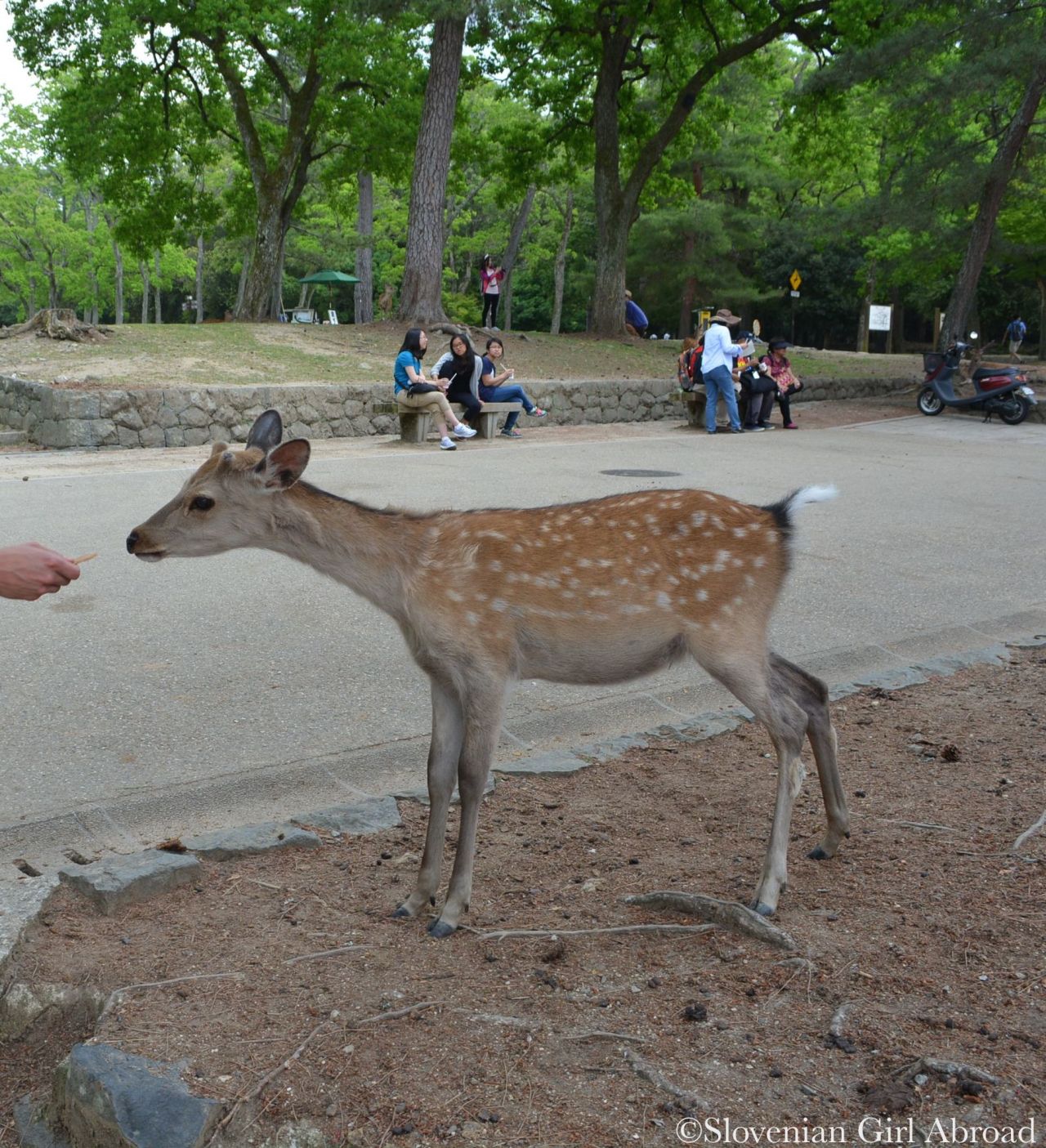
We had a lot of fun feeding the deers
Once we had hung out with the deers in the park, we moved to nearby Todai-ji temple to explore Nara’s rich heritage. From 710 to 784 was Nara not only political, but also spiritual and cultural centre of Japan. The heritage form that era was recognised by the UNESCO. The city’s historic monuments – temples, shrines and remains of the imperial palace were inscribed to World Heritage List under the name “Historic Monuments of Ancient Nara”.
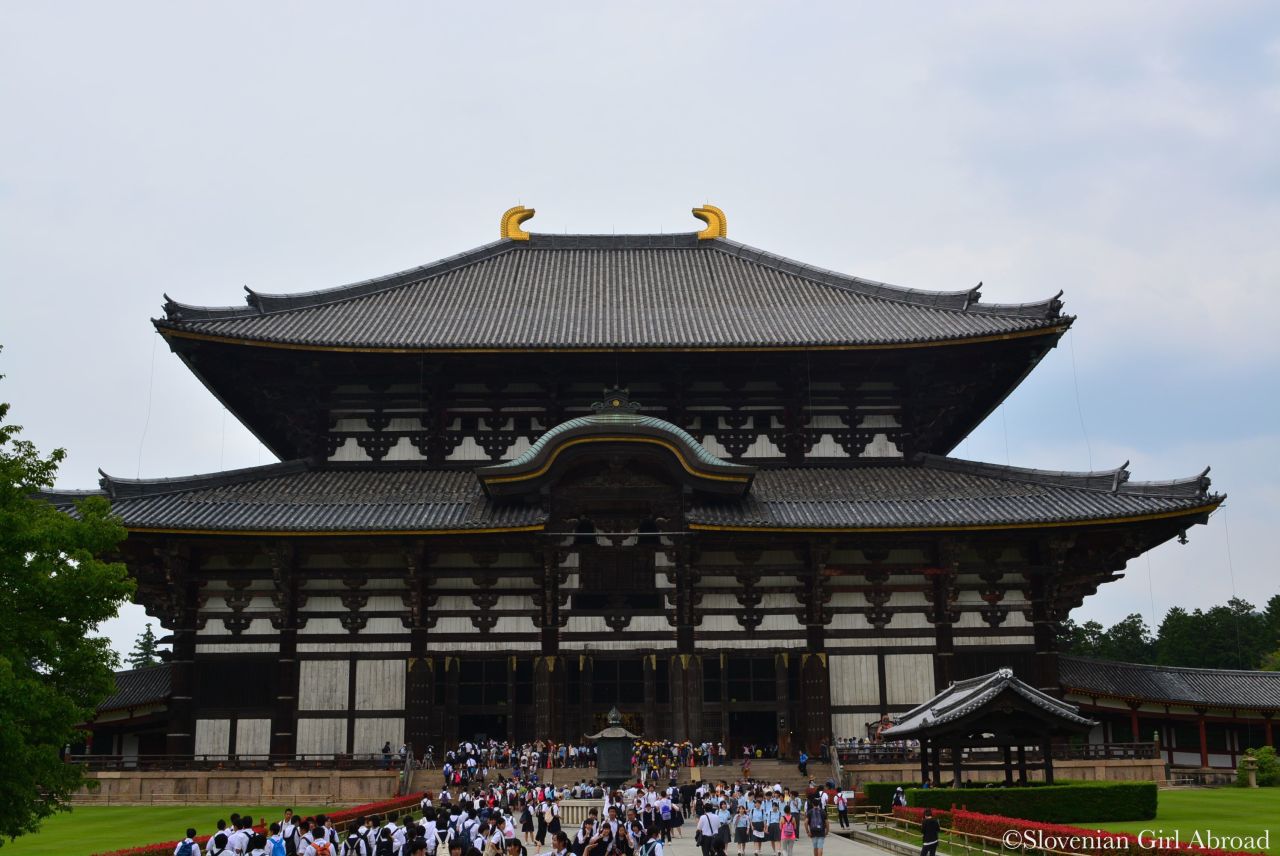
Todai-ji
Todai-ji, also known as the “Great Eastern Temple” is one of Nara’s Buddhist temples inscribed to the World Heritage list and is spectacular. It is considered to be the one of the largest wooden building in the world. It is massive and beautiful. Its shape reminded me of samurai helm.
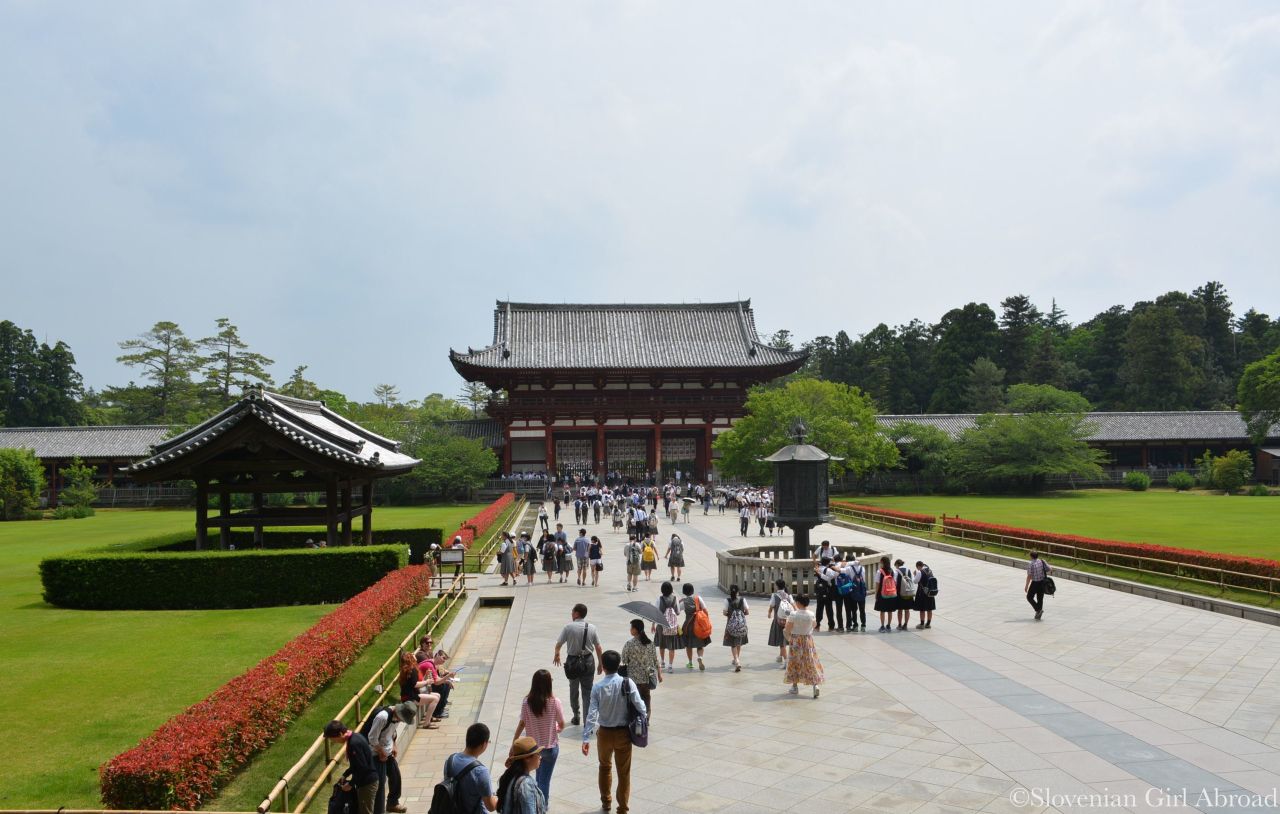
Courtyard of the Todai-ji Temple
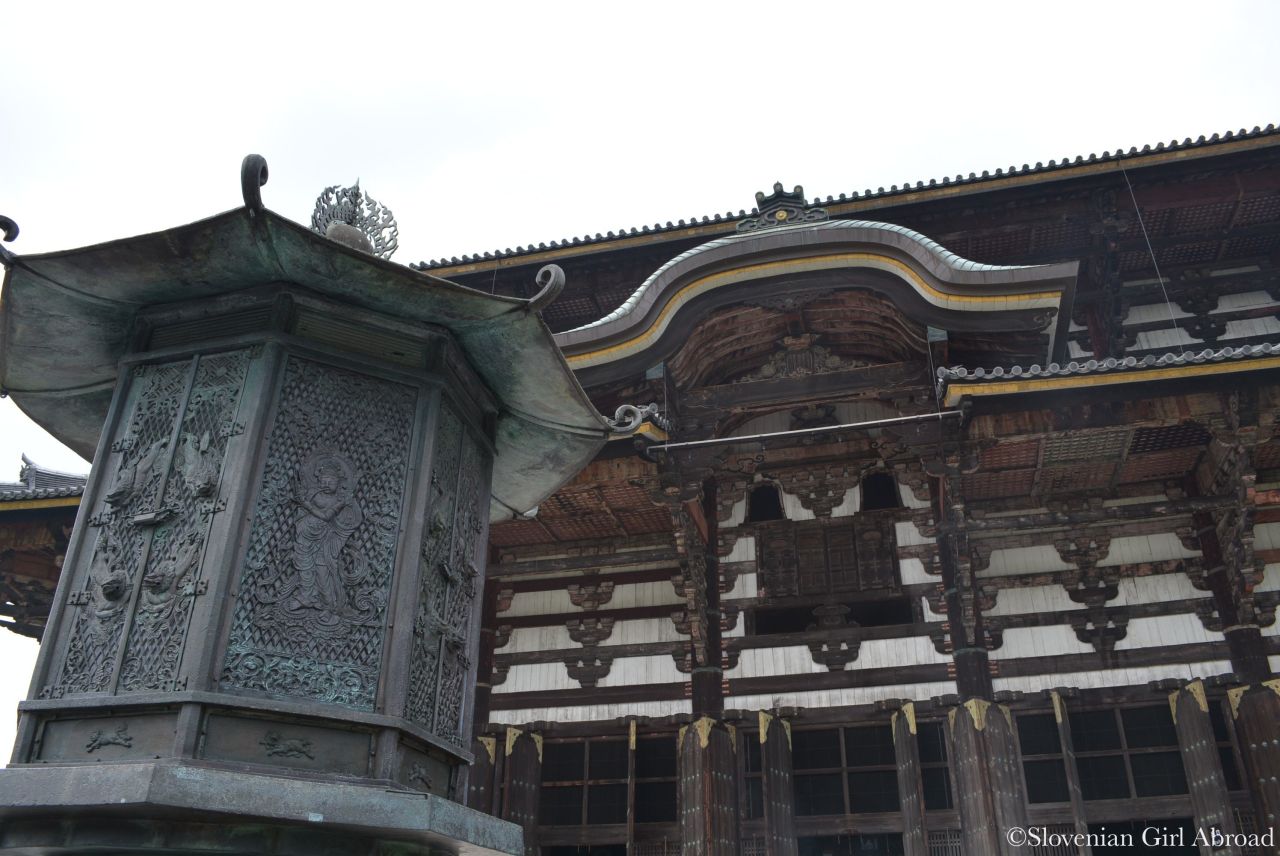
Impressive Todai-ji is definitely one of the most memorable temples I had a chance to visit in Japan
In Todai-ji’s main hall, one of the world’s largest bronze statues of the Buddha – 15 meters high bronze Daibutsu, can be found. While walking around the Big Buddha, we’ve spotted several smaller statues – Buddha’s guardians each carrying its own symbolic meaning.

Daibutsu – The Big Buddha
The most interesting part of Todai-ji temple is probably a pillar with a hole in its base that supposed to be the same size as the Buddha’s nostril. It is said that if you could crawl through, you’re granted enlightenment. Of course we had to try. We stepped in a queue and wait for our turn. Closer we get, the smaller the hole appeared to be. When it was finally our turn, my husband decided not to go and it was on me to try to squeeze through the hole. Standing in front of the hole, it appeared to be even smaller then it looked from a distance. I gave it a try, but when I was already inside the hole and had my arms on the other side and I saw my husband and a bunch of tourists taking pictures of me. The panic took over me. “What if I got stuck?”, I thought, “That would be a fun sight for them to photograph!” With such thoughts I rather pulled back. When My husband came to me laughing. I couldn’t resist laughing with him. Although it was a bit embarrassing, it was fun experience.
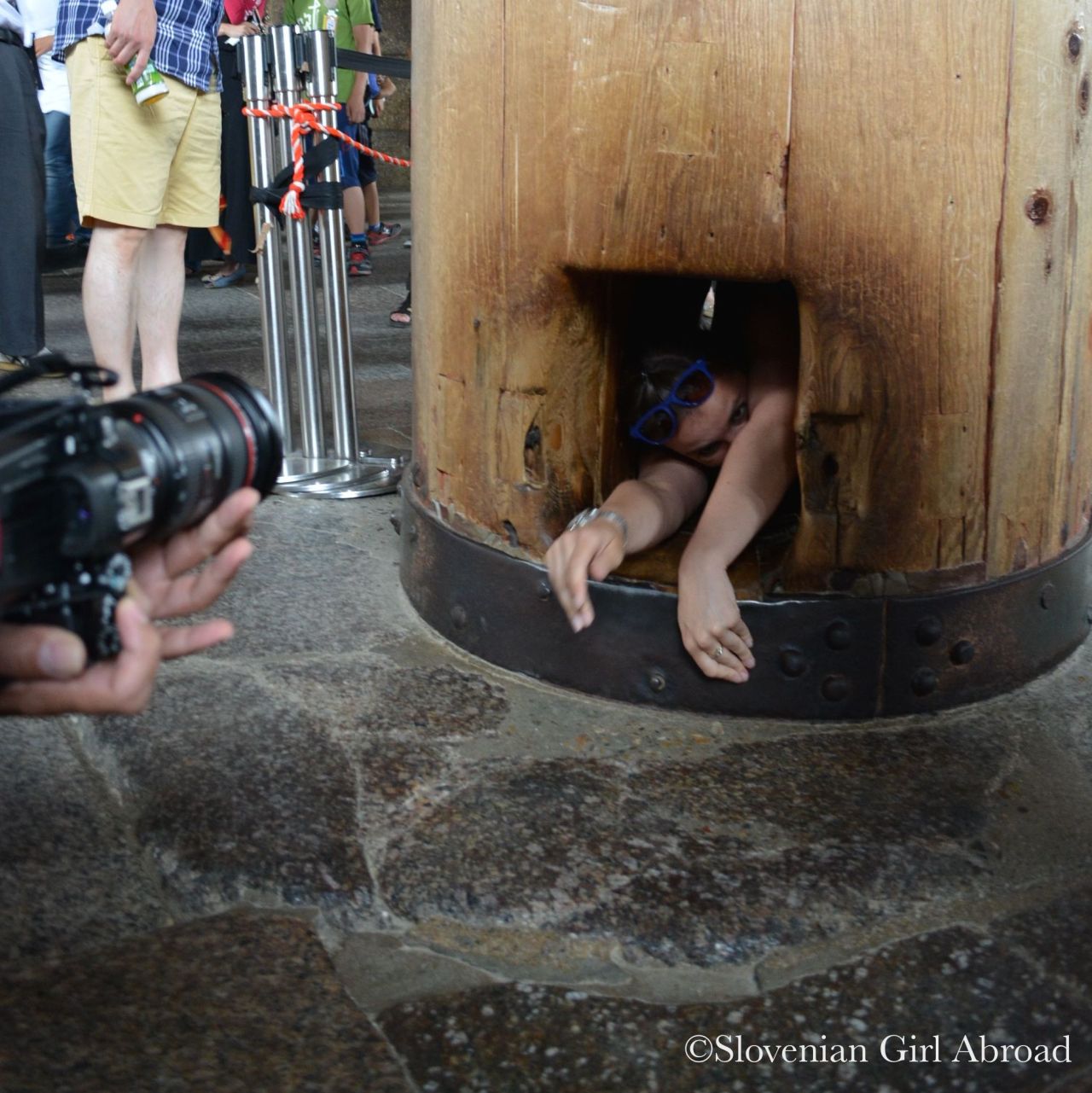
Me trying to achieve the enlightenment by squeezing through the “Daibutsu’s nostril”
After my failed attempt to achieve enlightenment, we slowly moved towards the exit. Before we left the temple, we observed a group of old Japanese ladies dancing.
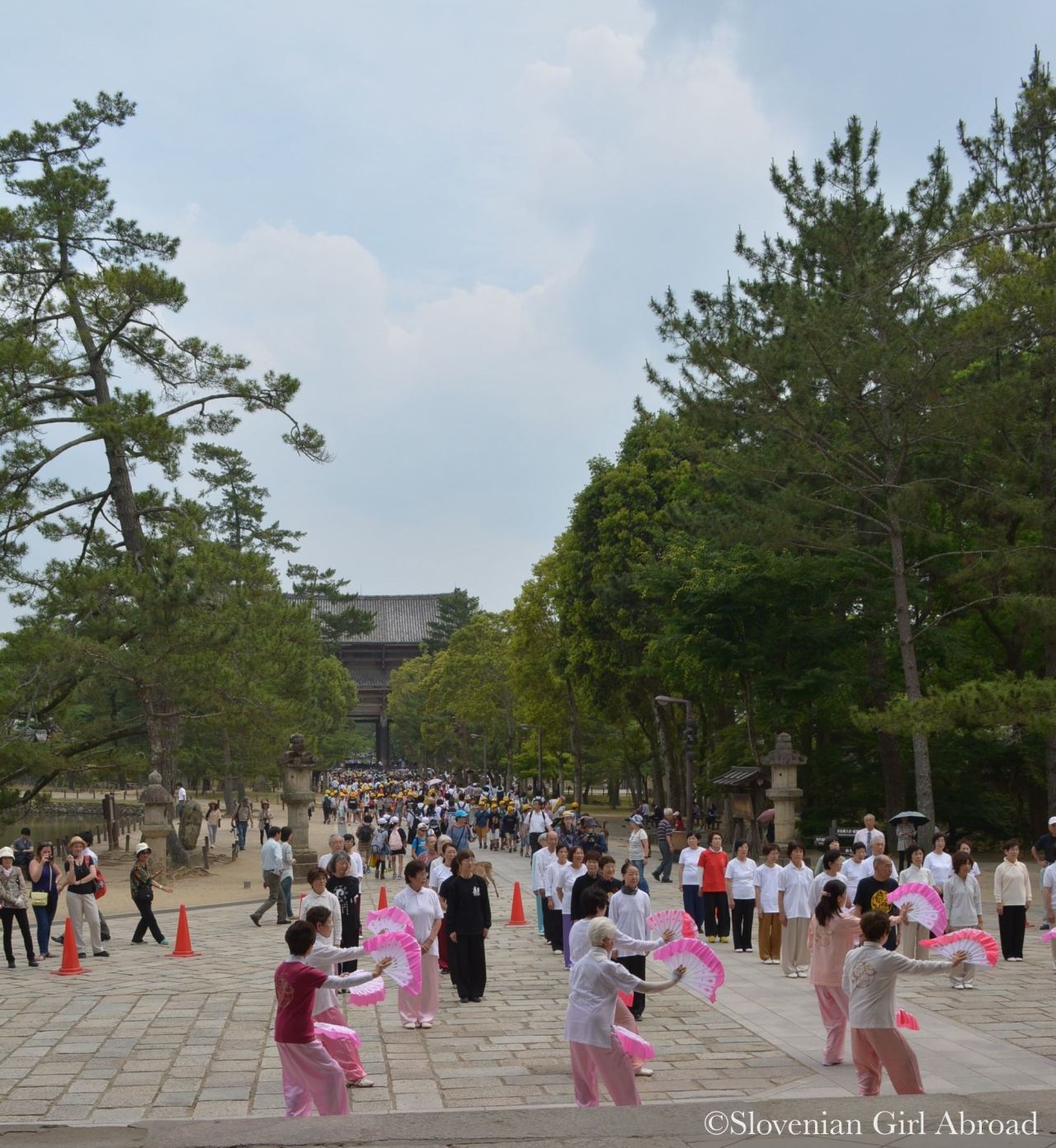
Japanese ladies dancing
We stopped in the park to feed the deers with the rest of deer crackers and take a bus back to the train station. We stopped at the lovely Japanese bakery for some snacks and took the train to Kyoto. At the Uji station we switched the fast train for the slower one that took us to Inari station – a station just a step away from the famous Fushimi Inari-Taisha shrine. Although it was already late afternoon, the access to the shrine was still open.

Tori gates of Fushimi Inari-Taisha shrine
Fushimi Inari-Taisha shrine is devoted to Inari, a Japanese deity of foxes, rice, tea, sake, fertility, agriculture, industry and general prosperity. It is one of the most famous Japanese shrines and I can definitely understand why – it is amazing.
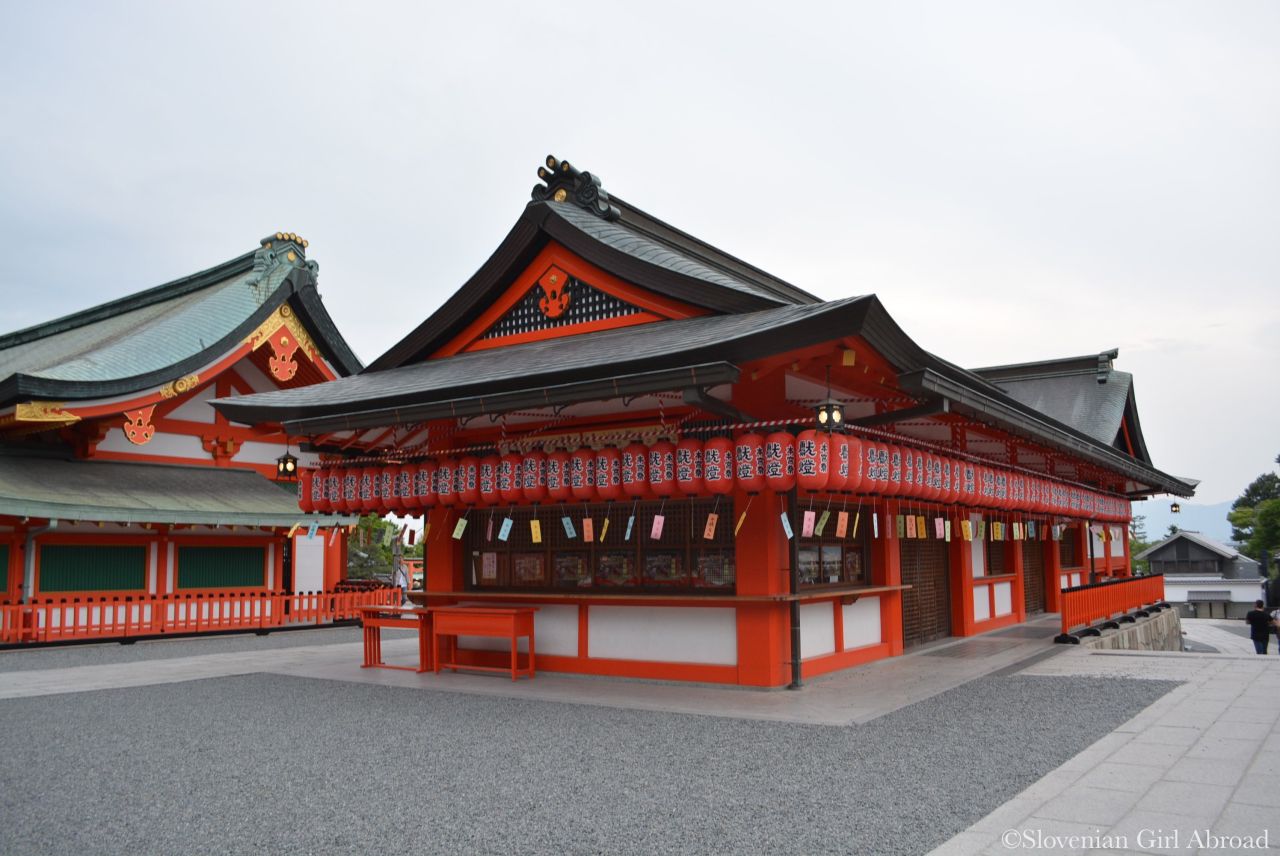
One of the buildings at Fushimi Inari-Taisha shrine
From the main shrine we walked uphill to the tori gates, Fushimi Inari-Taisha shrine is famous for. We soon discovered the endless gates cover the pathway straight to the top of the hill. I was aware of the toris, but I didin’t expect they will cover such a wast area. Walking through them uphill was an amazing experience.
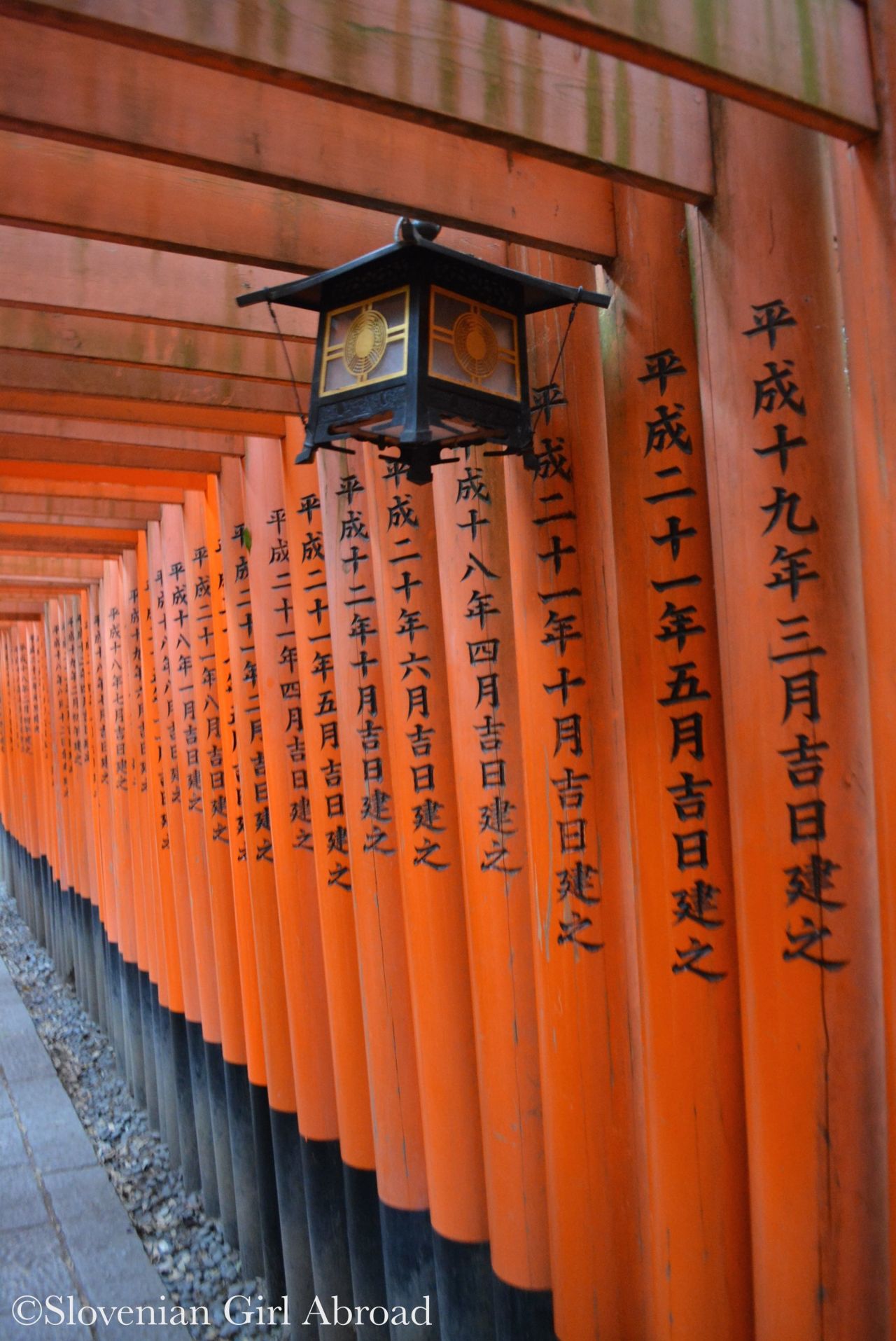
The pathways are covered with tori gates all the way to the top
The higher uphill you get, the better is view to Kyoto. Every here and there by the pathway, the bigger or smaller complexes of small shrines decorated with tiny red tori gates can be found.
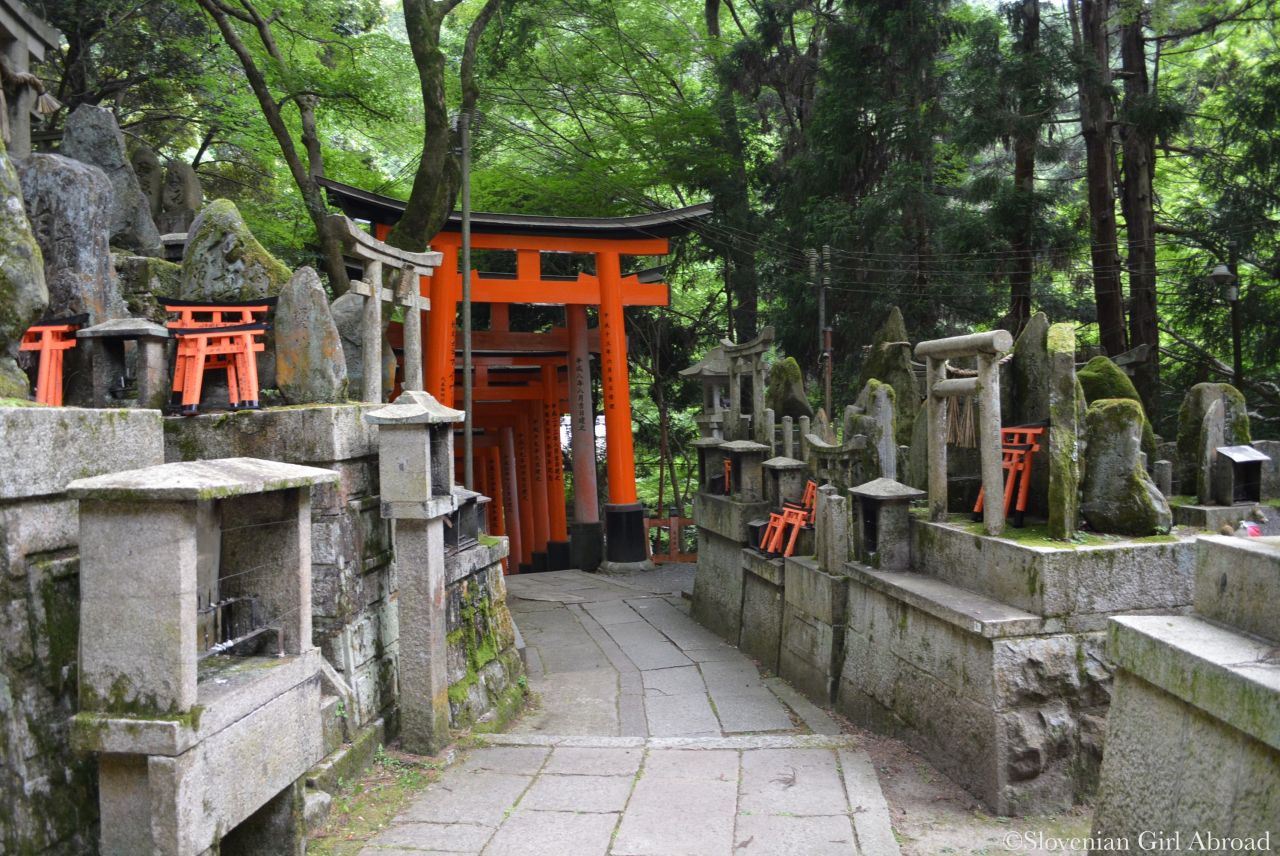
Small shrines on the way up to the top of the mountain
We didn’t get to the top, as it was already getting dark and we were already getting hungry. We returned back to the valley. We took the train to Kyoto where we went to the dinner to the same sushi restaurant we’ve been a day before. Again, we’ve enjoyed the delicious sushi and returned back to our hotel tired, but reacher for a bunch of amazing memories.
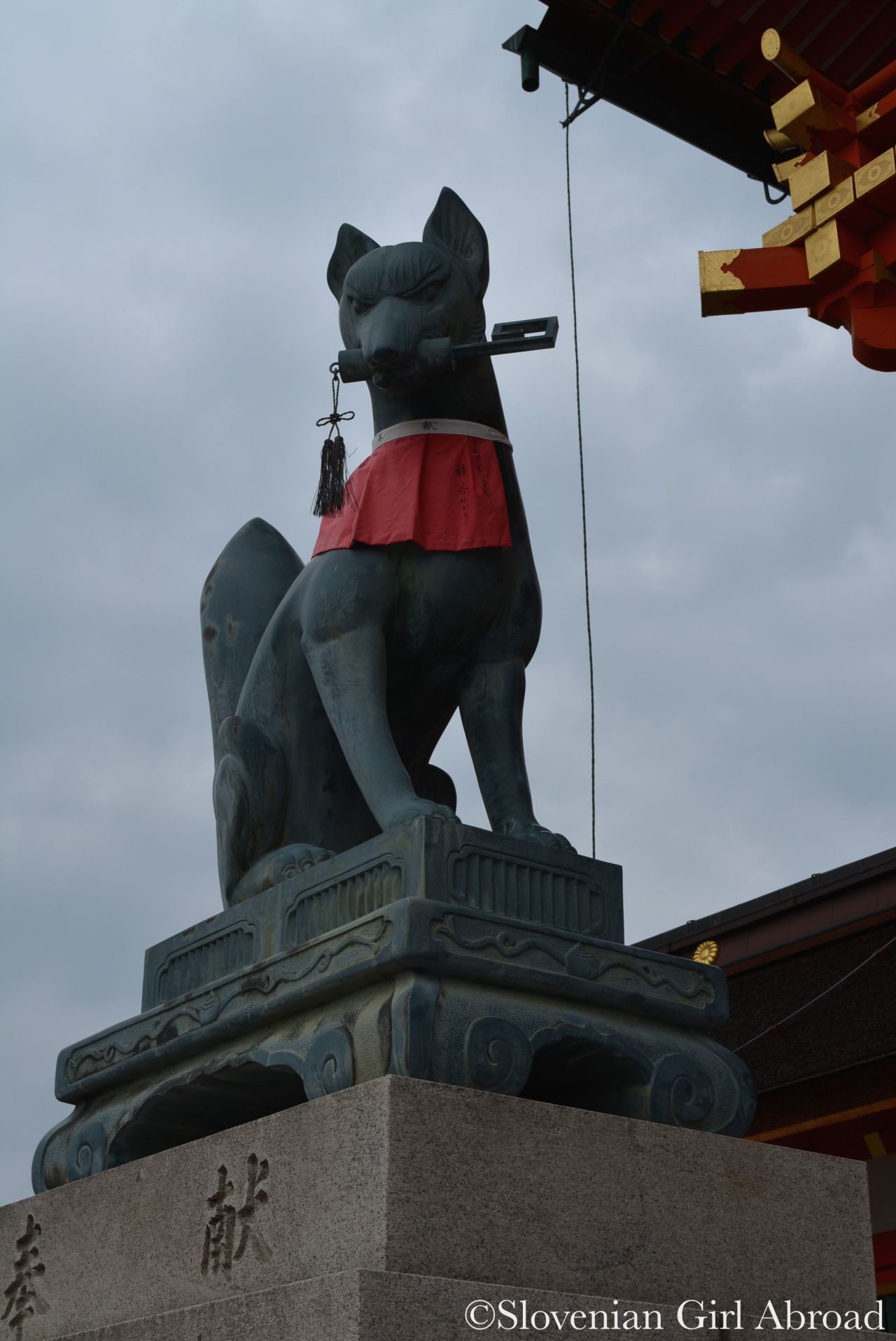
Foxes are a guardians of Fushimi Inari-Taisha shrine

Hi Urska,
Wow – Nara and Fushini Inari on the same day is quite a schedule. It seems most people don’t get to the top of Fushini Inari and I remember getting sidetracked all the time by exploring little pathways. However, the views over Kyoto are great.
John
LikeLiked by 1 person
It was quite ambitious plan, I agree, but we’ve managed to see Fushimi Inari and a bit of Nara (I would love to see more of it). You can only imagine we were exhausted after. But it was an amazing experience. Despite my blisters and sore feet, I would regret not going to those two places. They are both stunning. 🙂
LikeLiked by 1 person
I really need so visit Japan, I can’t wait to have enough money and time to go and enjoy the culture! x
Zoel Hernández | zoelhernandez.wordpress.com
LikeLiked by 1 person
Hi Zoel! I hope you manage to visit Japan anytime soon. It is amazing country! I loved it. 🙂
LikeLiked by 1 person
I love Japan and Nara my grandma is Japanese and I’ll be going back I may this year . Great post!
Thanks for liking my blog http://www.danetigress.wordpress.com
LikeLiked by 1 person
Thank you! 🙂
LikeLiked by 1 person
Your welcome I’m following your blog it’s great hope you like mine too
LikeLiked by 1 person
Thank you! I like tours too! Looking forward to read more in your new posts. 😀
LikeLiked by 1 person
Thanks me too
LikeLiked by 1 person
After reading your great post, I wish I had gone from Kyoto to this fabulous place. The deer are beautiful as are the tori gates of the shrine. Thanks for a really interesting post with lovely photos.
LikeLiked by 1 person
Thank you dear! I’m so happy to hear you like my writing. 🙂
LikeLiked by 1 person
Reminds me of my trip to Kyoto a couple of years back. We didn’t have time visit Nara then.
LikeLiked by 1 person
Oh how I want to go to Japan. I talked about it with my husband, and it’s not happening this year, but fingers crossed for next. In the meantime I’ll keep reading your posts:).
LikeLiked by 1 person
I kind of repeat myself, but Japan is amazing country. Fingers crossed you’ll manage to get there anytime in the future. Till then, I’ll try to do my best in describing my trip. 😉
LikeLiked by 1 person
Nara is brilliant and the perfect day trip from Kyoto. Man there were a lot of deer!
LikeLiked by 1 person
Wow! I would have really liked to feed the deer. What a beautiful place – so rich in culture and tradition!
LikeLiked by 1 person
It looks like you had a lot of fun ! I would have also tried to fit into the hole, I have no shame :p I would love to visit Japan so badly, but i’m still saving for it
LikeLiked by 1 person
Heheh, high five. 🙂 Yeah when a group of children in front of me crawled through the hole without any problems, I thought it is a peace of cake, but its not. At least not with my big booty. 🙂 I hope you’ll manage to visit Japan anytime soon. It’s amazing country. I would go back there in a minute. 🙂
LikeLiked by 1 person
The culture is fascinating and I just love the food. I would love to have that experience over there.
LikeLiked by 1 person
Thanks for sharing your experience. I’m hoping to visit Kyoto and Nara later this year. Japan is so beautiful and unique, isn’t it?
LikeLiked by 1 person
Thanks for reading it. 😉 I would love to read your impressions of Nara & Kyoto. 🙂
I agree, Japan is beautiful and unique country. 🙂
LikeLike
Wow! it’s nice to see those Sika Deers. Just wanted to visit that place to discover and enjoy somehow.
LikeLiked by 1 person
This brings back some memories! Although the deer weren’t quite as sweet with us!
LikeLike
Excellent post, I visited Kyoto and Nara in 2012 we had an awesome time but not enough wish I can go back. You have inspired me to blog about it. Thanks!
LikeLiked by 1 person